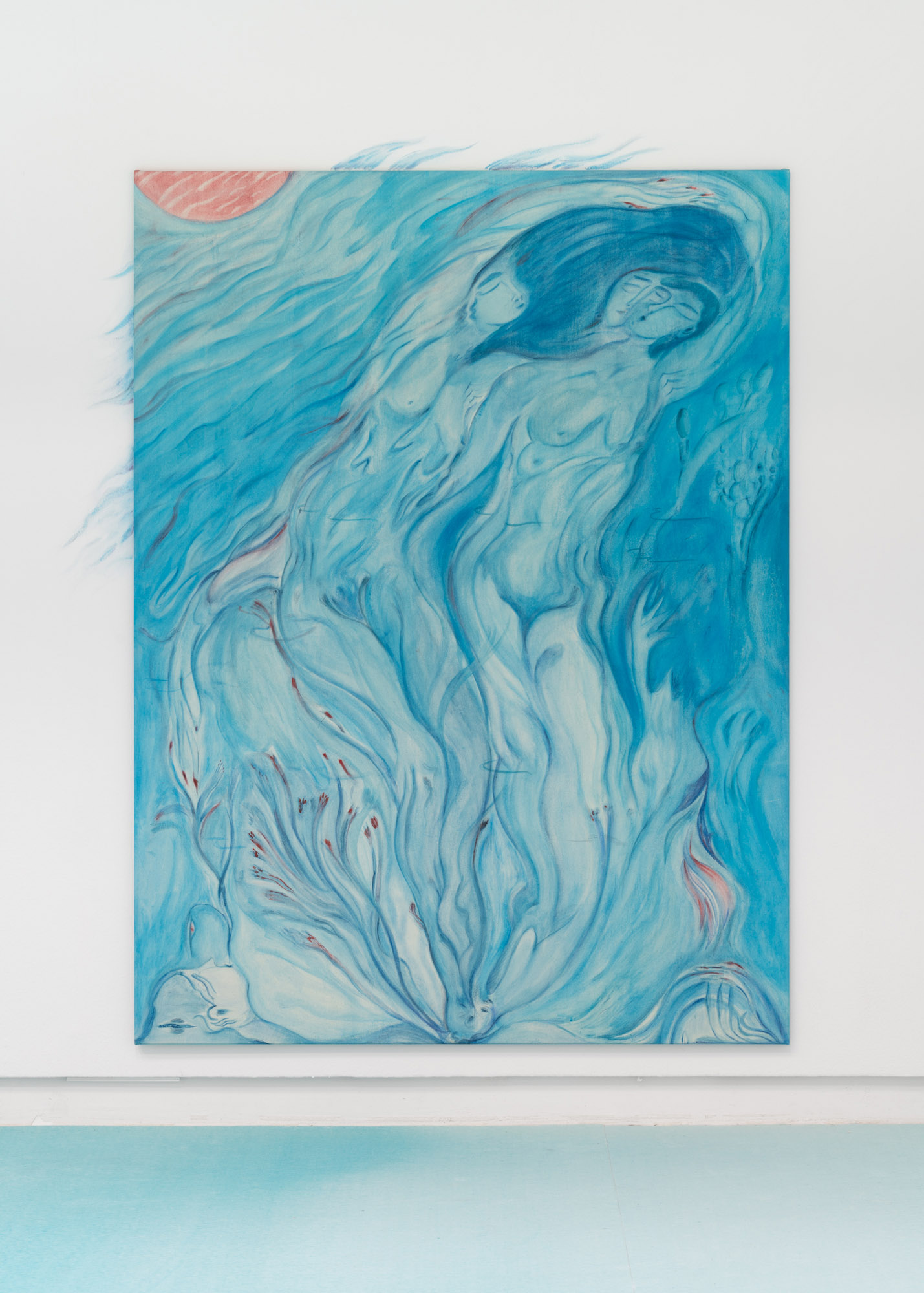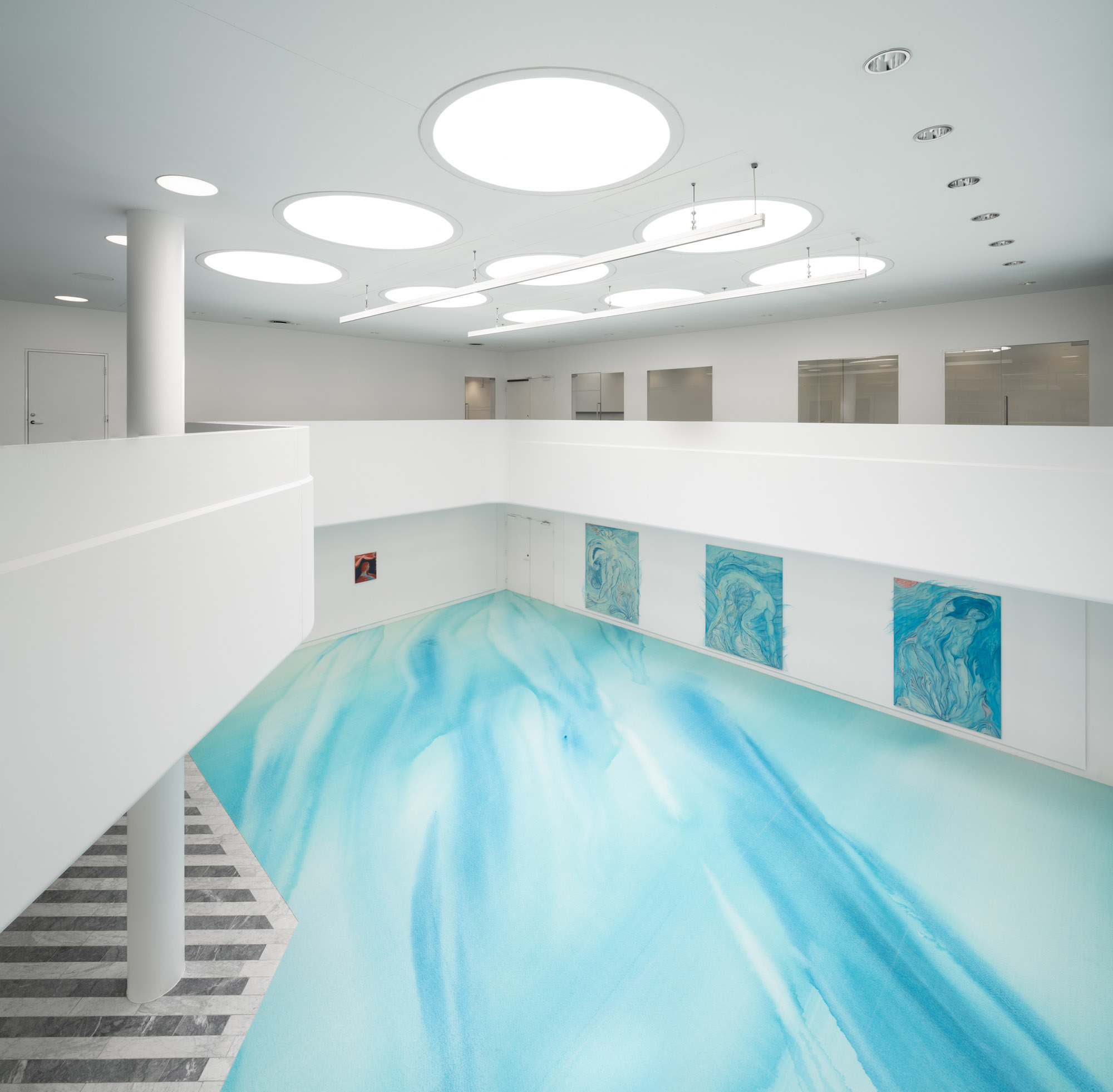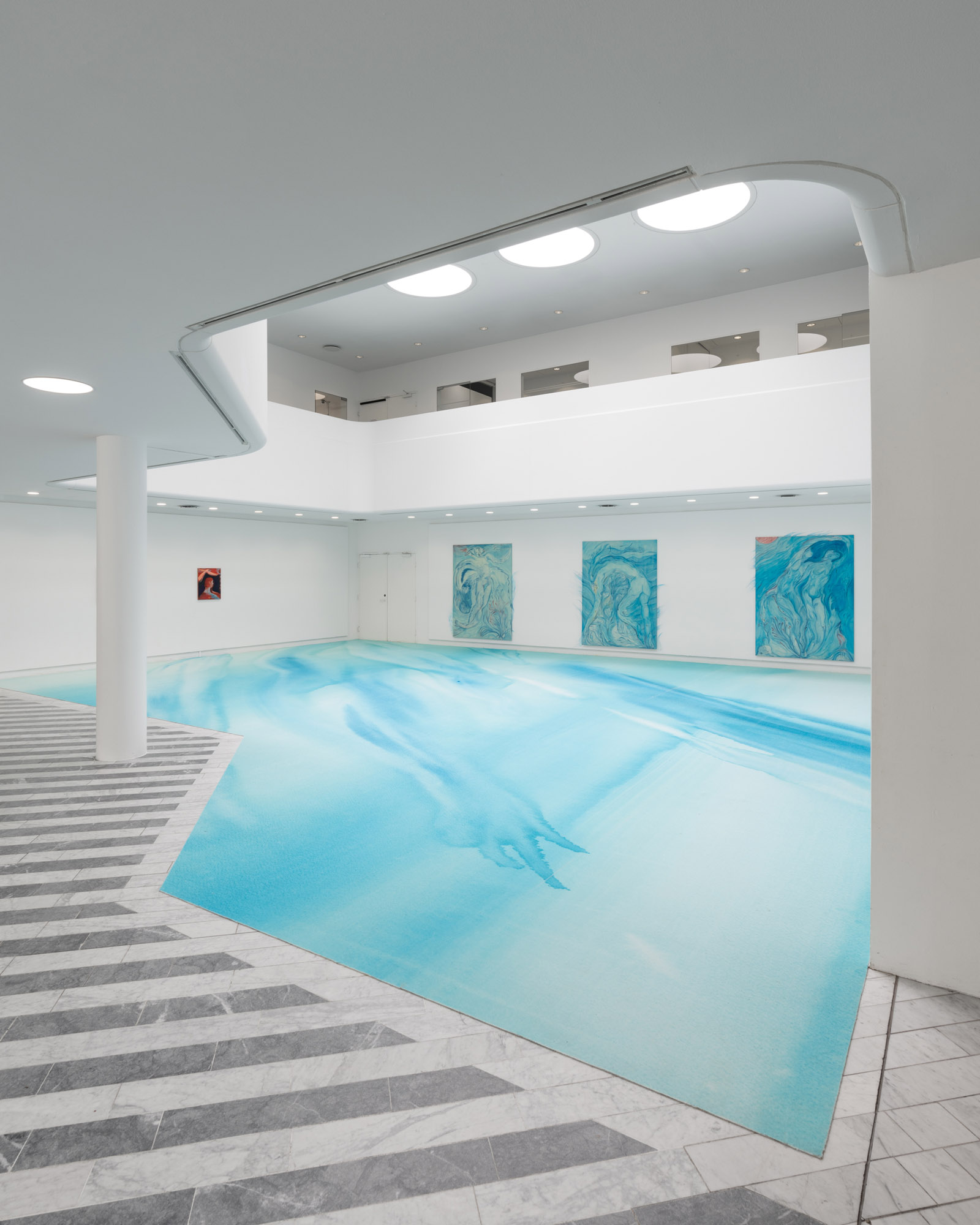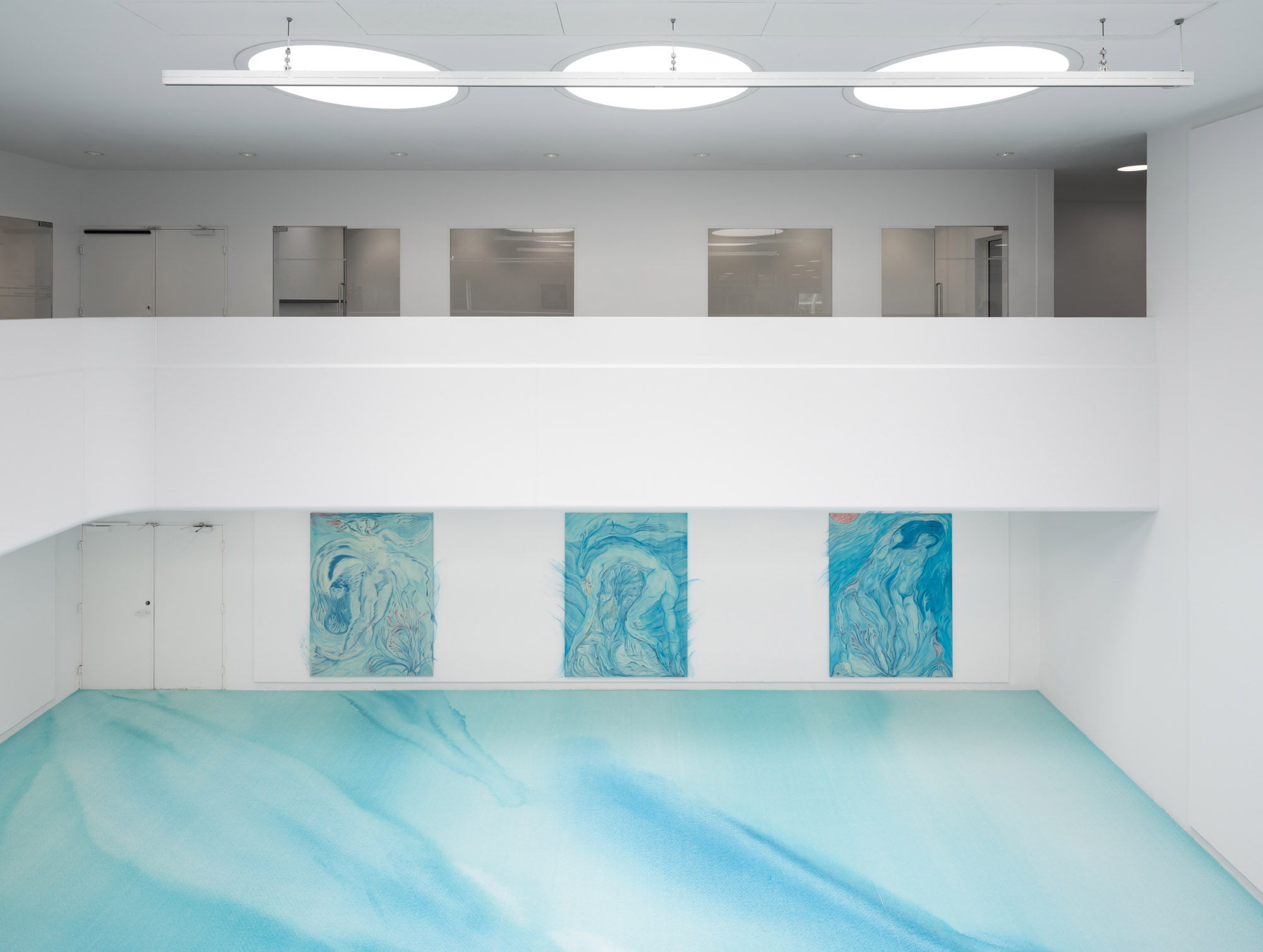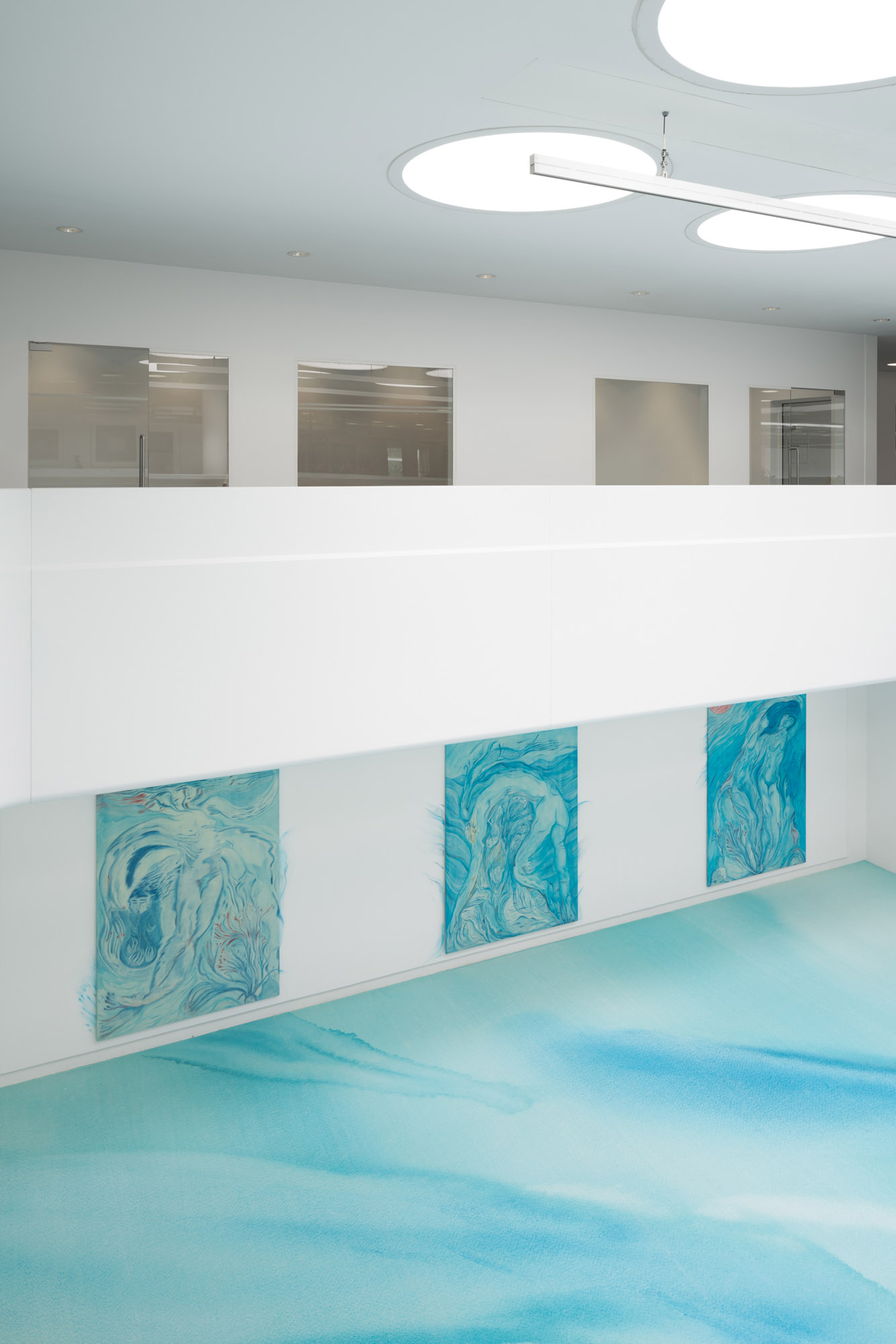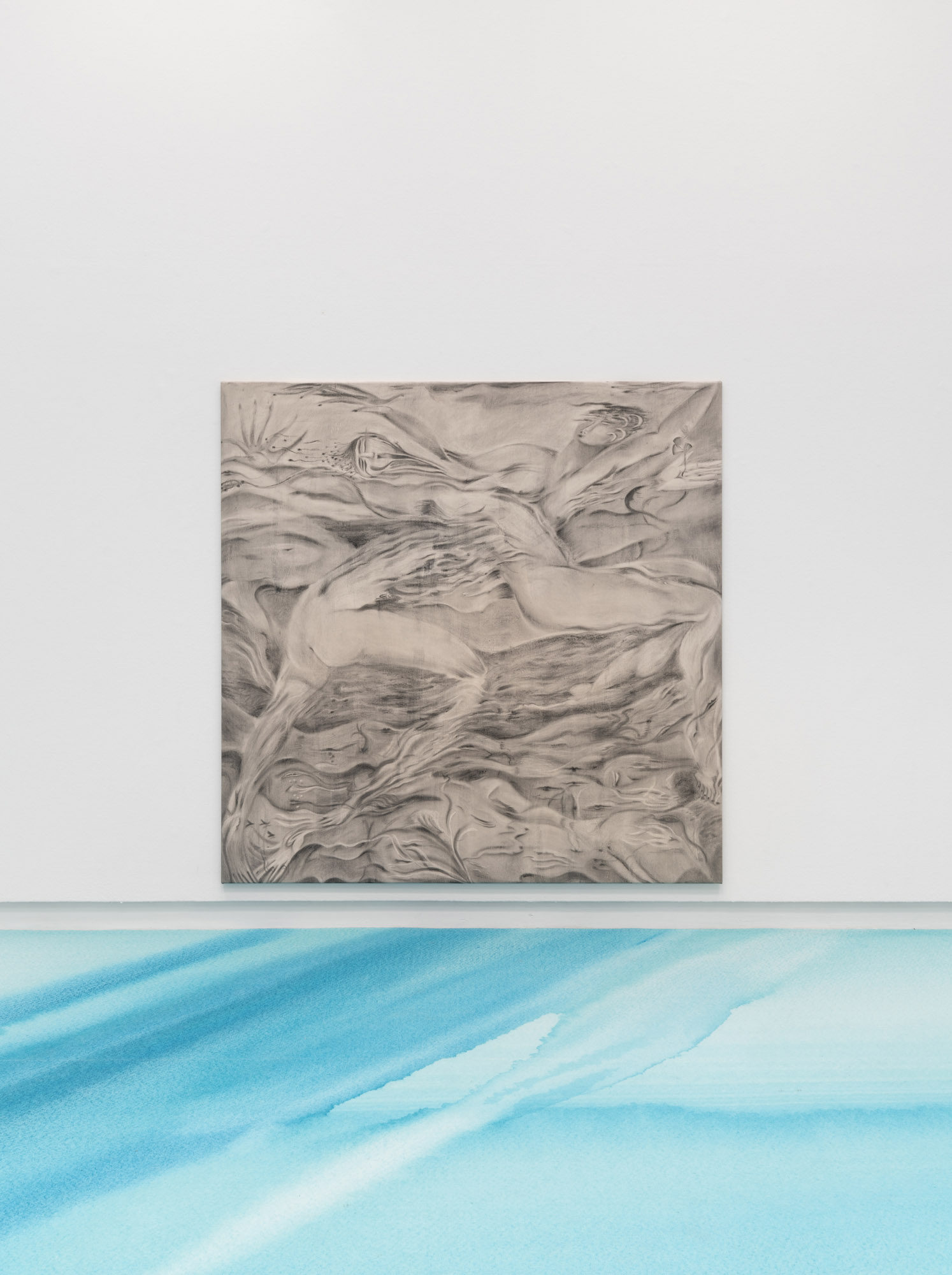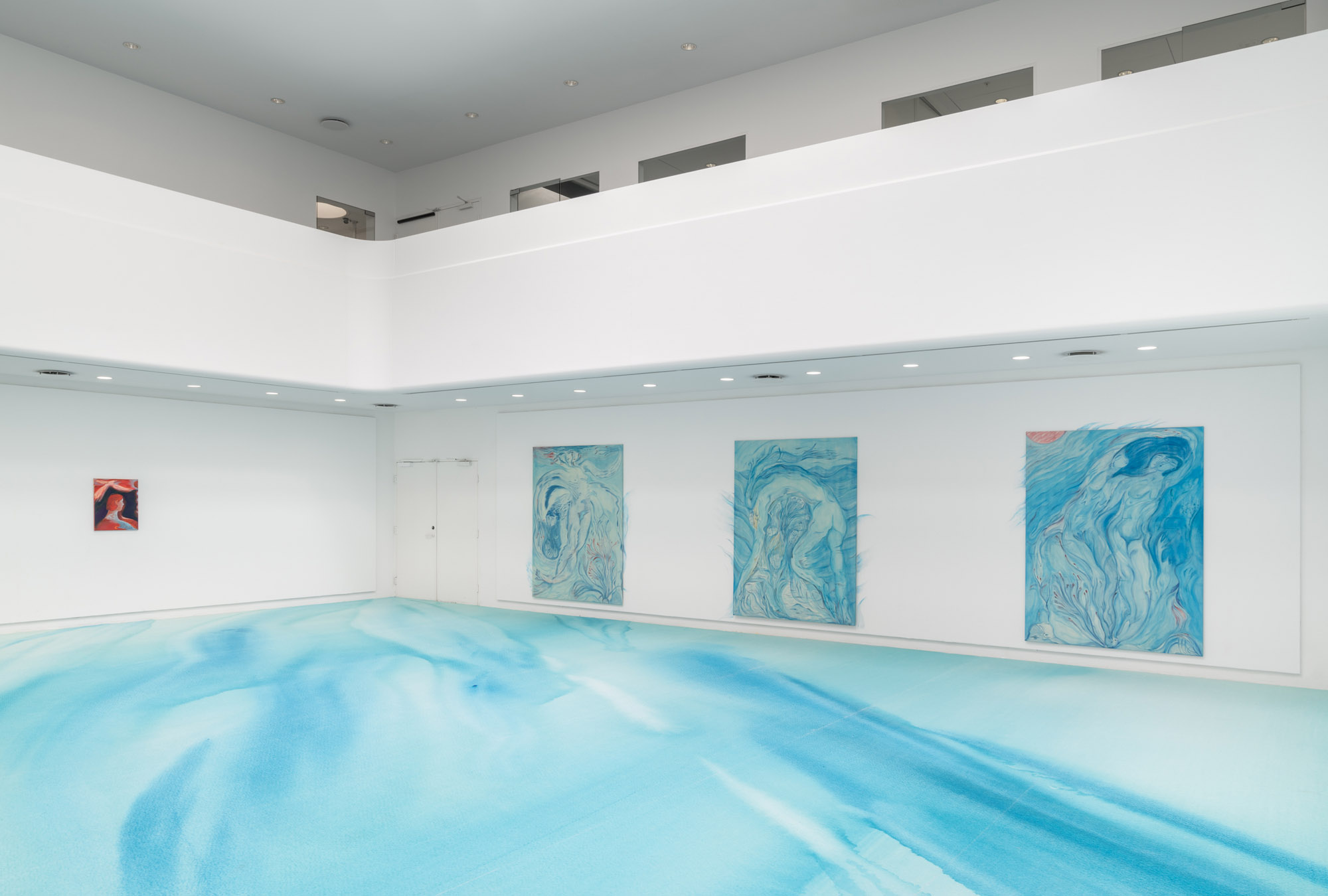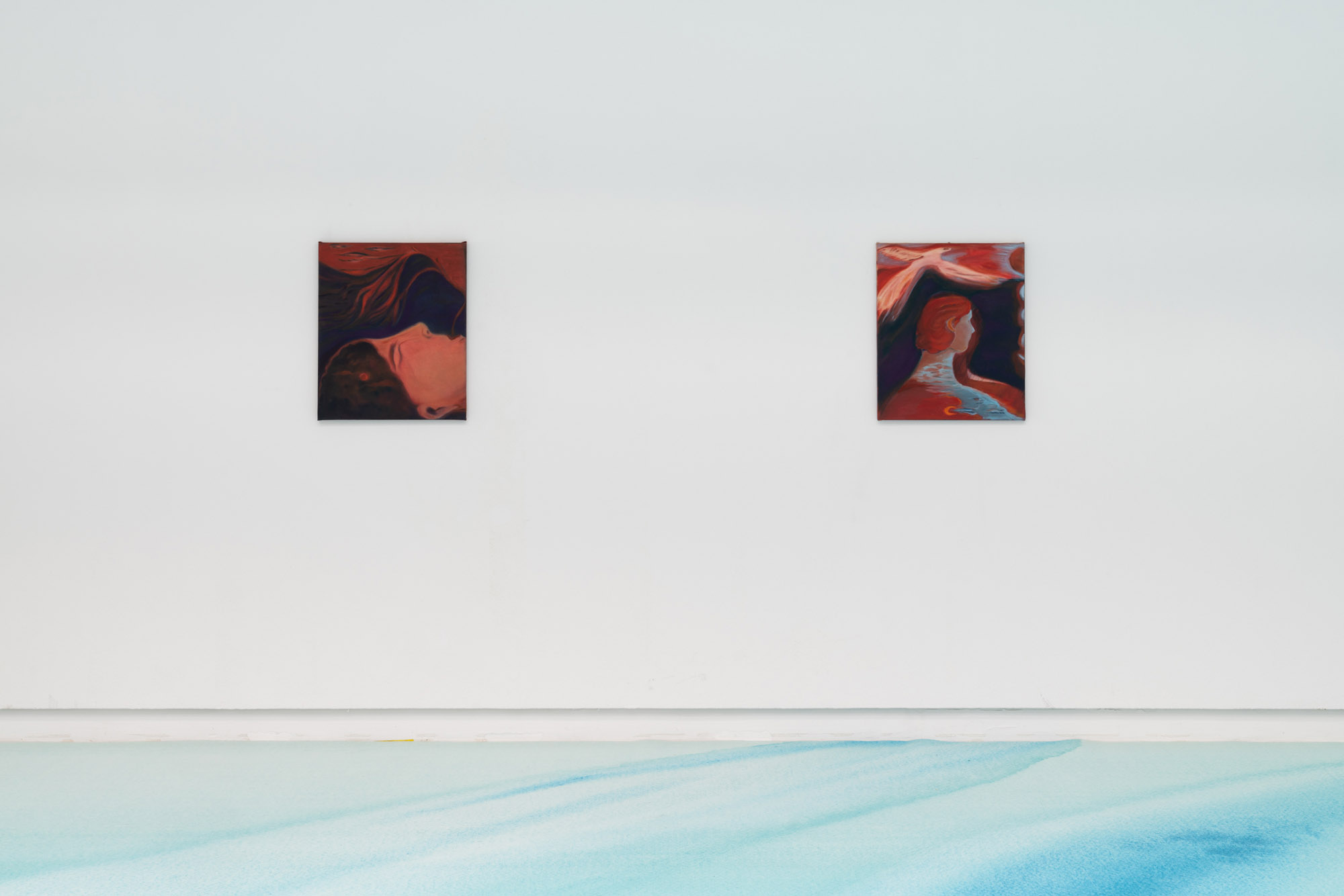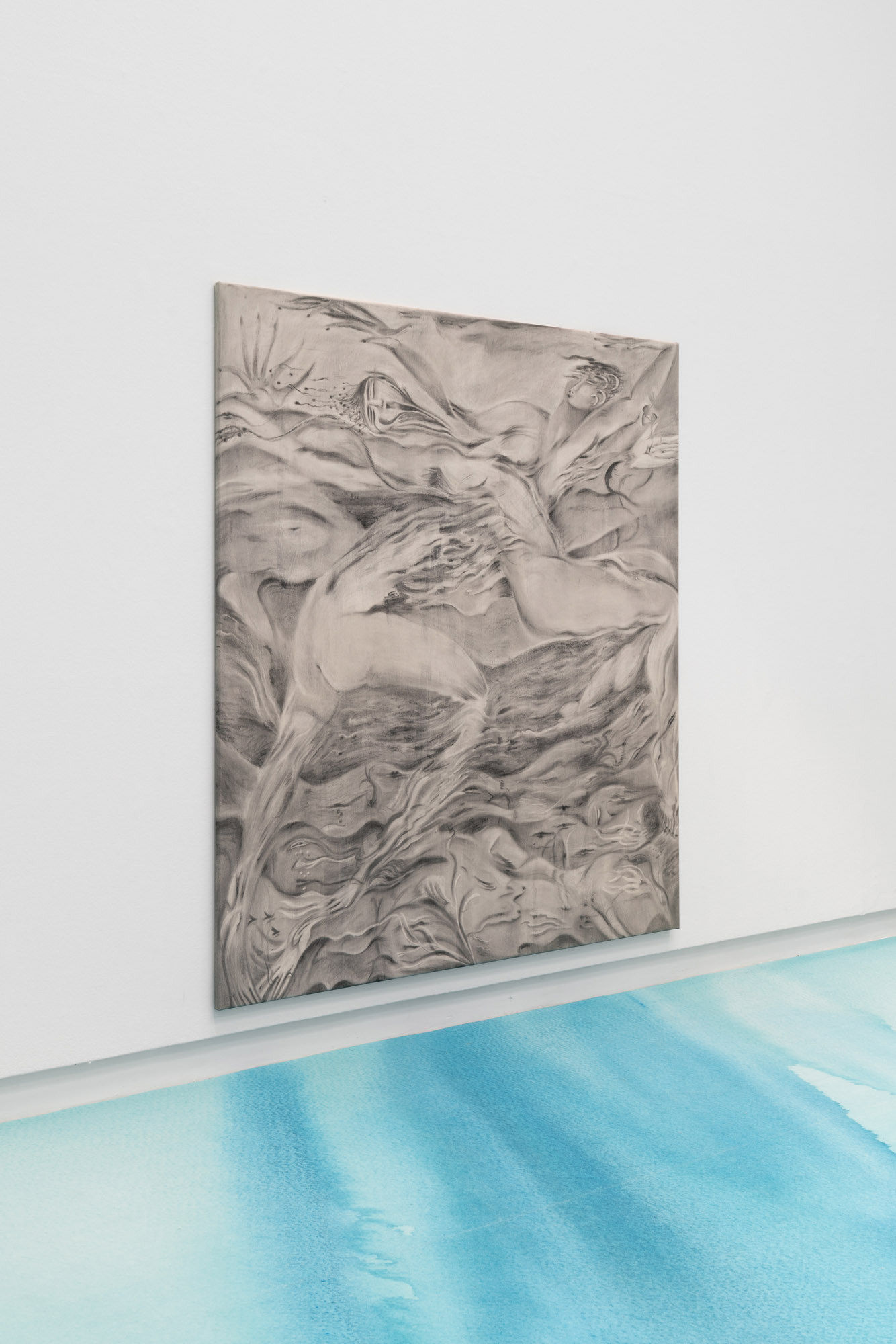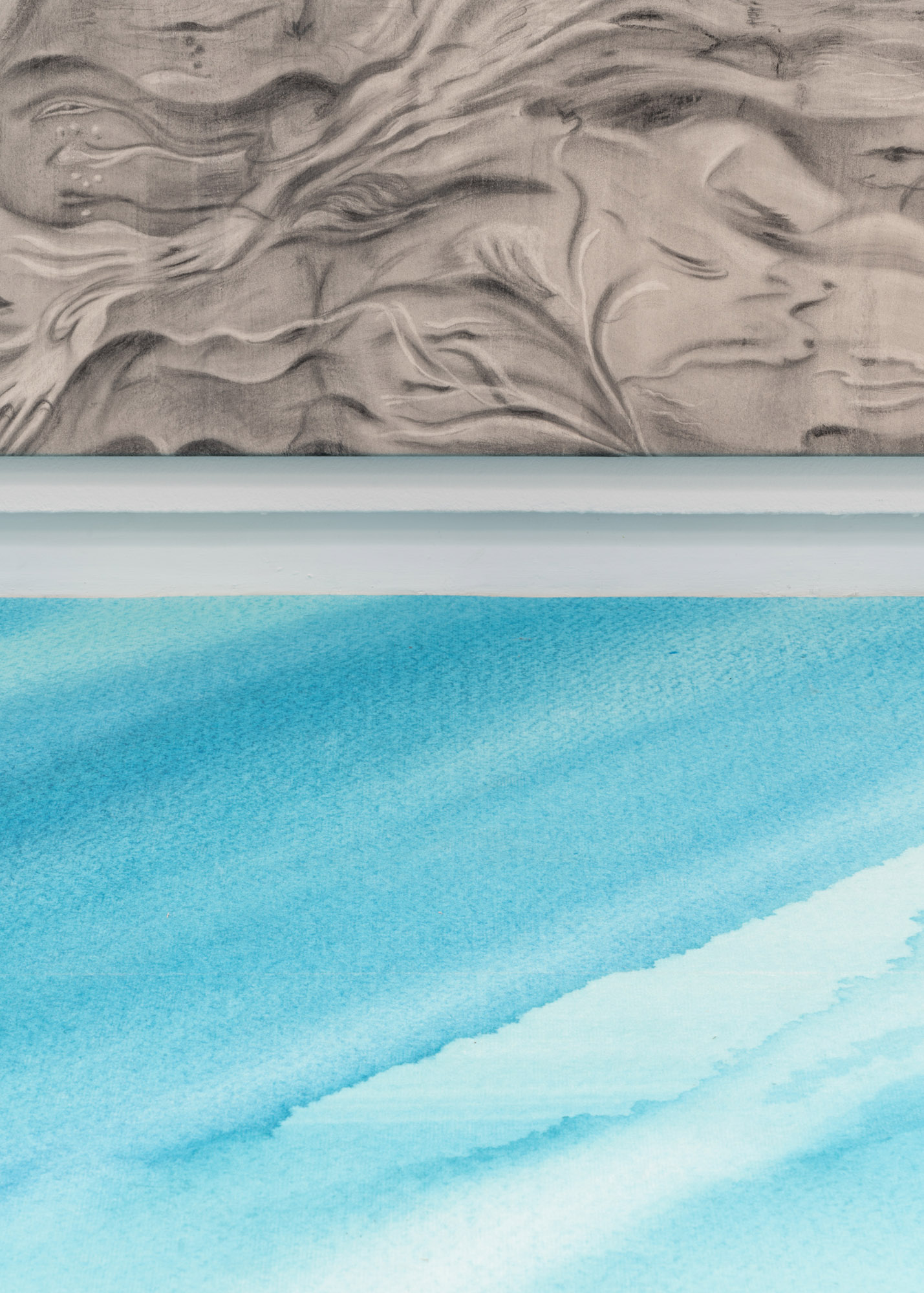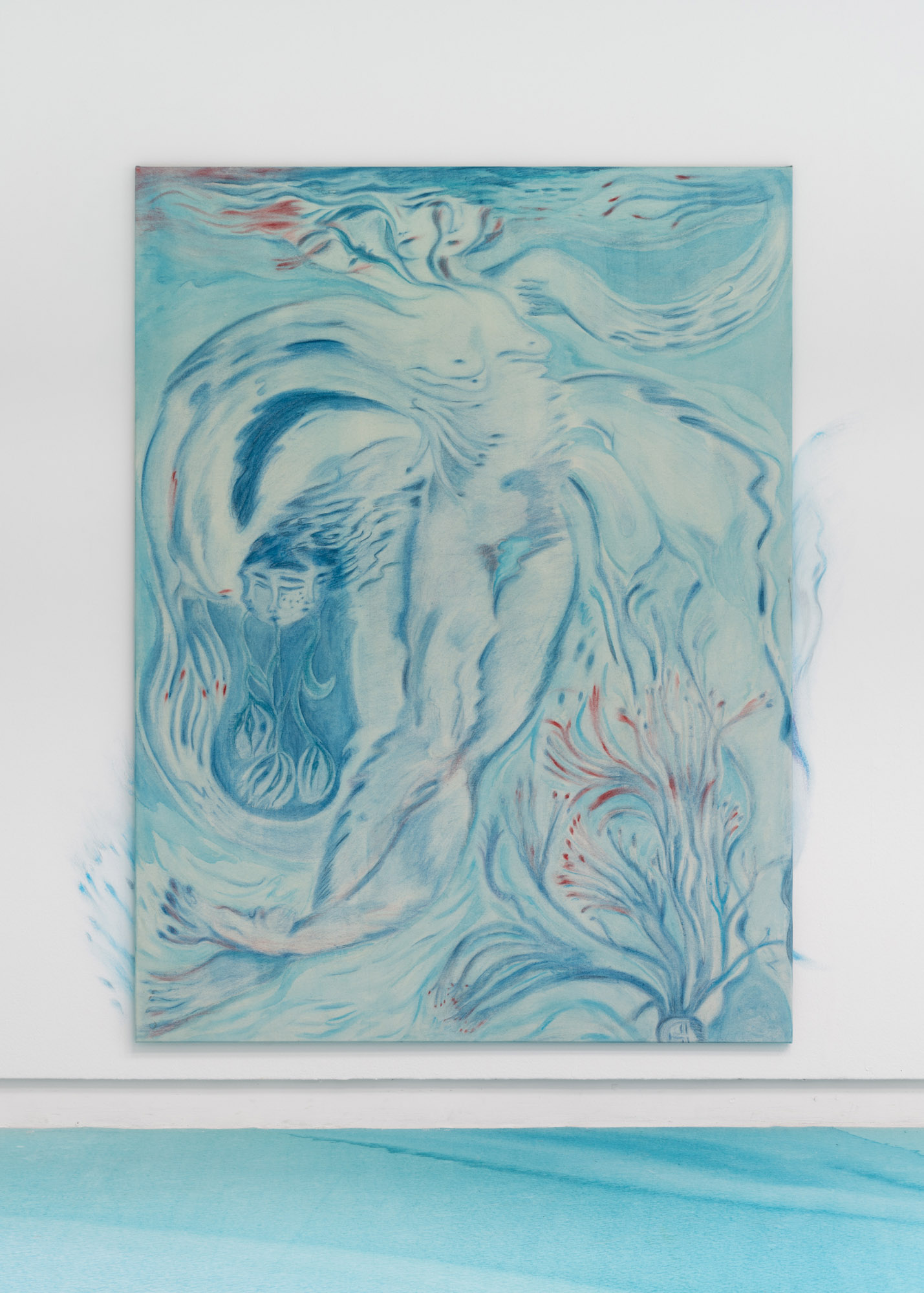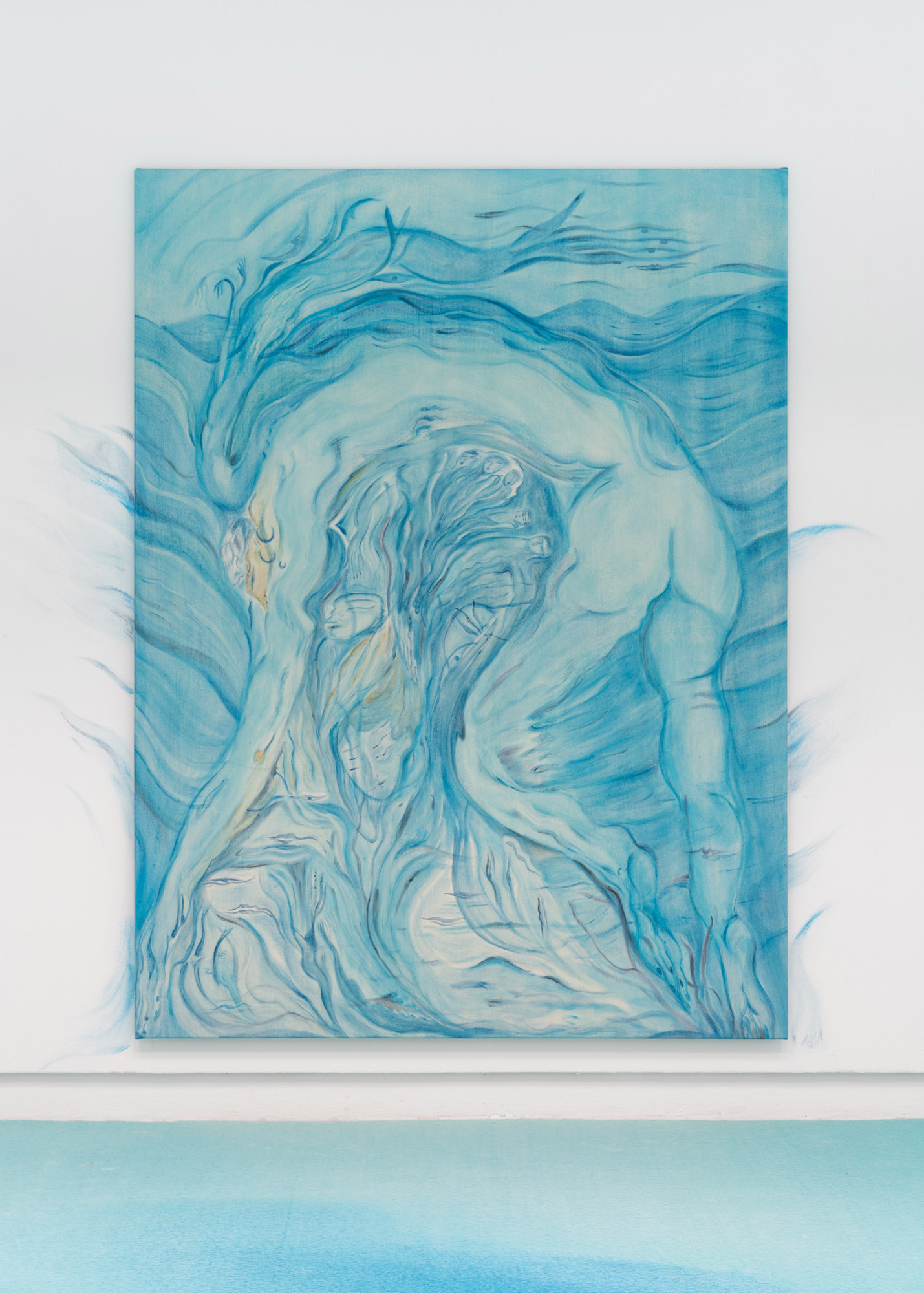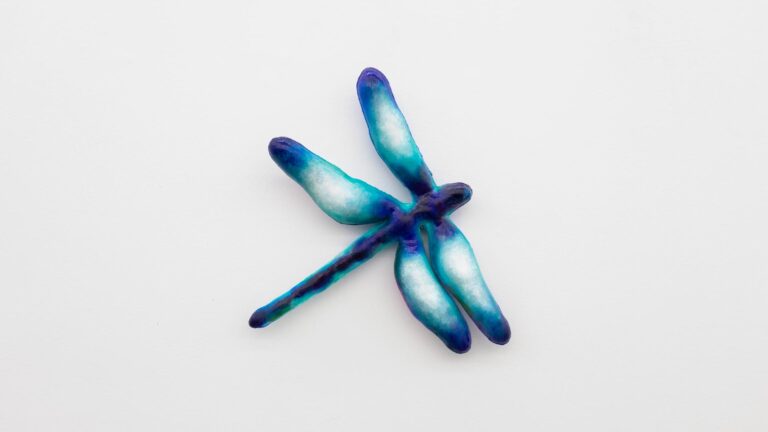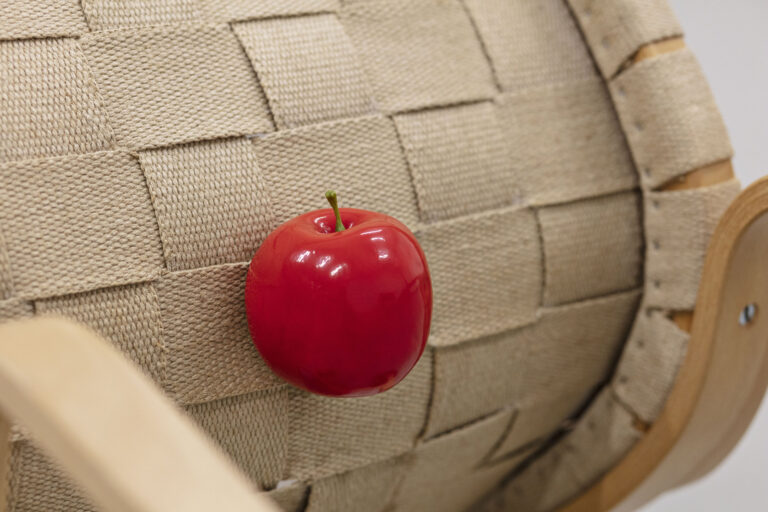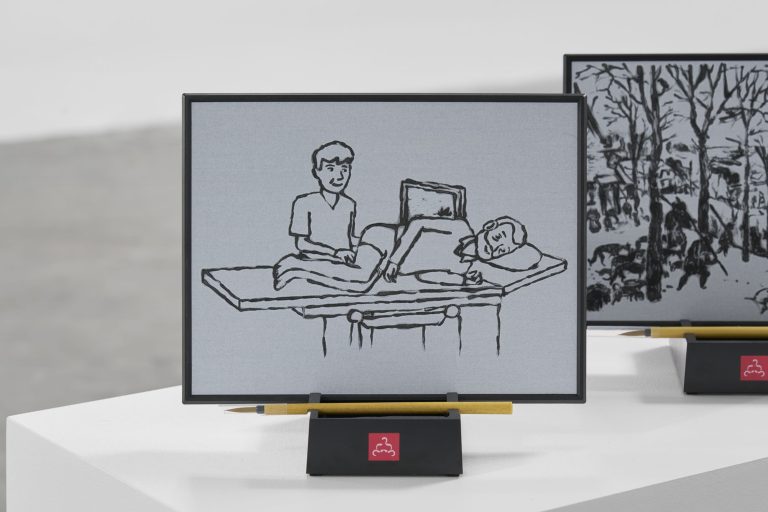Artist: Kinga Bartis
Exhibition title: Shores of Selves
Venue: Tranen Contemporary Art Center, Hellerup, Denmark
Date: June 10 – September 18, 2022
Photography: David Stjernholm / all images copyright and courtesy of the artist and Tranen Contemporary Art Center
In Kinga Bartis’s work, just about everything is in motion. Things we usually distinguish from each other flow together. The outline of a human body is blurred in the current of the ocean. Ocean slides into sky. The wind snatches the flapping wings of a bird, and the bird merges with the clouds. Bartis’s works are like ecosystems. It is impossible to view anything in isolation. The various elements are not demarcated by clear contours. They vibrate. But everything is not merely animated. Things are also interwoven to such an extent that they animate each other.
Shores of Selves at Tranen is Bartis’s first institutional solo exhibition. It presents a world in which everything has a self, but that self is in a state of change and has no line of demarcation. A thing may have a self, but may also share it with others. Bartis not only paints people, animals, plants, the sea, the sky and the celestial bodies in their own right. She also paints what they mean for each other. The place where one element ends and a new one begins is as fluid as the coast, where sea meets land – like embrace, like collision, like sex, like struggle. The same applies both to the paintings and the carpet in the exhibition. Yes, everything occupies its place, but everything also overflows into each other.
Bartis grew up as part of the Hungarian minority in Transylvania, Romania, and later as an immigrant in Hungary, where she took a master’s degree in social sciences, before moving alone to Denmark and embarking on her second period of study at the Academy of Fine Arts in Copenhagen. Her background has often led her to think of the sociologist Georg Simmel’s concept of the foreigner who feels alienated from their immediate environment: without a place to call home or a native language to express their lifeworld. Her most fluent language lies in her paintings. Here, culture, norms, boundaries, hierarchies, rules and even natural laws are shifting. However, although her biography may be one way of approaching her works, the works are not about a single life, but about several lives and forms of life.
In Bartis’s paintings, the human being is not merely indistinct and inseparable from their surroundings. In several works in Shores of Selves the human figure is multiplied. Bartis explores bodies, in which the individual appears like a sea of figures; or a sea of figures is engulfed and encased by just one body. Humans often assume familiar figures, but then they morph into unrecognizability. There is the maternal body, giving birth to and investing water plants with life. There is the sensual body, making love, not only to other bodies, but also to everything by which it is surrounded. There is the strikingly beautiful body, whose head and organs mutate monstrously and bud like a flower. Then comes a myriad of mouths, eyes, and vaginas, all of which are so open to the world that they are not rooted in any body at all. In the paintings, rootlessness is not just cultivated as loss, but as an opening to a rich space of possibility and ambiguity – as another way of thinking, of feeling, and of existing in the world. Just as there are examples in the plant and animal kingdoms of consciousness without brain, feelings without a central nervous system, and procreation without genitals.
Two motifs that are interwoven and form a common thread in Bartis’s work are the body and water. As Bartis points out, there is a long tradition, from Botticelli’s The Birth of Venus to Ingres’ The Source, of depicting water as the female element. Nevertheless, the two remained strictly separate. No matter how much the females bathe, they remain dry. Both the water and the woman are passive resources. We know where we have them. In Bartis’s works, things are the other way around. In one painting, the sea is in the actual human body as it gazes towards the horizon. In other paintings, the bodies are in the sea. In Bartis’s paintings, what we regard as woman and water are less defined and more negotiable.
Bartis’s paintings are at once figurative and abstracted. Figures emerge from the waterscape, disappear in it, rise above it, merge with it or sink. They are images of both the individual and the world in a state of rapid transformation. The environment is unsettled and survival requires and calls for constant transformation, be it as metamorphosis, adaptation or camouflage. But they are also images of a world, in which body, identity, species etc. are fluid, and hierarchies are obfuscated. One thing slips into another, perhaps even its opposite, and the foreground and background of the pictures are blurred or swap places.
A number of the great overlapping themes and debates of our age lurk beneath the surface: various feminisms, gender, sexuality, posthumanism, ecology, biodiversity, the rising sea level, migration, the intelligence and sensibility of the plant and animal kingdoms, and much more besides. But Bartis does not take an obvious side in an existing debate. She is more concerned with how one theme slides into, illuminates, and shadows another theme. Bartis’s works may seem highly topical. At the same time, they recall intersex gods, metamorphoses and asexual reproduction of Greek mythology and other cosmologies as well as evolutionary theories about the origin of humankind in the world’s ocean and visions of a future flooded world.
Kinga Bartis (b. 1984) is born in Transylvania, Romania, and lives and works in Copenhagen. She graduated from the Royal Danish Academy of Fine Arts in 2018. Recently, she has had solo shows in Copenhagen at Galleri Nicolai Wallner and Outpost Gallery and participated in the group exhibition Soil.Sickness.Society at Rønnebæksholm in Næstved.
Shores of Selves is part of Tranen’s program of extemporary art. The focus is on contemporary art that is not primarily focused on our contemporary condition. When everything from climate to technology evolves at ever greater pace, the present becomes ephemeral and intangible. The present starts to shrink. Meanwhile, our knowledge of the past increases. Speculations about the future abound. As part of this development, a lot of art is no longer contemporary — which literally means ‘with time.’ Instead, art is rather ‘extemporary, i.e. ‘out of time’.
The exhibition is generously supported by The Danish Arts Council and Knud Højgaards Fond.

